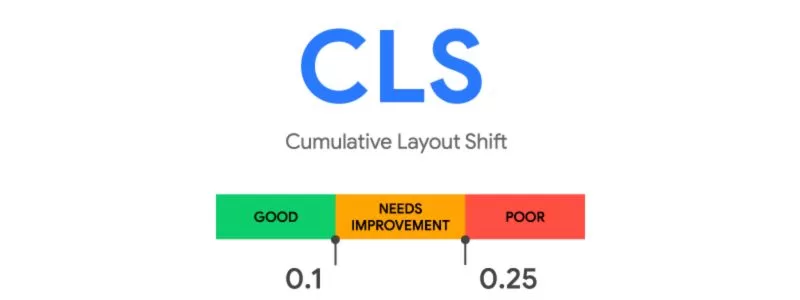How Important is CLS For SEO
Cumulative Layout Shift (CLS) is a site experience statistic that measures how often your site’s pages move unexpectedly.
A low CLS score has an influence on your website’s search engine optimization even if other factors also affect user experience, such as other site components. (SEO). Therefore, knowing what CLS is and how to get a good CLS score aids in improving your website’s functionality as a whole.
This article will go over the many methods for calculating a CLS score. At the conclusion of this essay, we will also explain what factors impact it and address some frequently asked questions regarding CLS.
What Is Cumulative Layout Shift (CLS)?
By calculating the total amount of unexpected layout changes on a page, Cumulative Layout Shift measures the visual stability of web pages. When a visible element’s position or size changes and the surrounding content follows, this is known as a layout shift.
Cumulative Layout Shift Score Impact on SEO
Being that it has an impact on the functionality and user experience of the website, cumulative layout shift is a ranking factor in Google. A website that does not adhere to Google’s standards may be penalized. It is one of the Core Web Vitals indicators.
A low CLS score implies that a website is untrustworthy, which may drive visitors to abandon it sooner. As a result, optimizing your website for a high CLS score is a critical component of a successful SEO strategy.
What Is a Good CLS Score?
A website with a high CLS score has a significant number of unexpected layout changes. A wholly static page, on the other hand, can receive a score of zero.
To assist site owners in measuring and raising their CLS scores, Google has established a standard for all Core Web Vitals metrics:
- Good – below 0.1 is the acceptable score according to Google’s standard.
- Needs improvement – between 0.1 to 0.25 indicates you need to make changes to reduce unexpected shifts.
- Poor – above 0.25 can damage your site’s ranking.
Varying online pages and screens on a website may have varying CLS ratings. Layout shifts on mobile screens have a more significant impact on mobile user experiences.

How to Measure Your Cumulative Layout Shift Score
Here are two popular methods to do a Cumulative Layout Shift test:
- In the lab – simulate the user’s experience in a controlled environment.
- In the field – based on real user interactions.
There is no superior technique, as using both will offer more trustworthy statistics on the performance of your website. Google provides many free tools to help you measure the CLS of your website.
Option 1. Measuring CLS in the Lab
The outcome of measuring CLS in a lab only takes into consideration a tiny number of potential circumstances. The majority of browser development tools include a mechanism to determine a web page’s CLS score, frequently providing a rectangle overlay indicating the problematic areas.
Here are the steps to measure CLS using Google Chrome’s Developer Tools:
- Click your browser menu and head to More Tools -> Developer tools. Another option is to press Ctrl + Shift + I and select the Performance panel.
- Check the Web Vitals option and click on the reload button or press Ctrl + Shift + E to record the page load
- Wait for the outcome, then select the Layout Shift option next to Experience. Under Summary, the utility will display the Cumulative Score.
Be aware that different visual components representing layout changes may result in many Layout Shift tabs with varying ratings. To determine which component is creating the problem on your website, click on each tab.
Option 2. Measuring CLS in the Field (Real User Data)
The other way to analyze your website’s overall performance is by measuring real user interactions using the Chrome User Experience Report (CrUX) as the primary source of data.
PageSpeed Insights is a well-liked tool for measuring the data from your actual users. The procedures for using PageSpeed Insights to determine a web page’s CLS score are listed below.
- Enter a web page URL and click on the Analyze button to test its performance.
- PageSpeed Insights will show the overall Core Web Vitals Assessment and whether the web page meets Google’s standard. The tool will show the result for Mobile devices first.

- Click on Desktop to find the CLS score for desktop devices. Notice how the score can be different on different screens.

- Click on Expand view to understand the score better.

Other popular tools to help measure CLS in the field are BigQuery and Looker Studio.
How to Determine Which Element Is Responsible for a Low CLS Score
Some factors to consider if a website has a poor CLS score include:
- Banner ads, embeds, iFrames, image, and video elements without size specifications.
- Dynamic content above the current viewport, without a placeholder for screen size.
- Custom fonts that change the rendering behavior.
These activities frequently wait for a network response before uploading items, resulting in more unexpected layout adjustments.
The precise components that might lead to a problem with layout shifting can be identified using the techniques used to calculate a web page’s CLS score.
The unreliable elements on the Layout Shift page, for instance, are shown in the Performance section of a browser’s developer tools.
Conclusion
To assess user experience, cumulative layout shift evaluates unanticipated changes in the user viewport area. Additionally, CLS has a big influence on your SEO because it affects Google rankings.
A website with outstanding visual stability has a CLS value of less than 0.1, while anything higher than 0.25 suggests poor performance. We demonstrated two approaches for measuring CLS: in the lab and the field. While either approach can be used, utilizing both yields more trustworthy information about website performance. for more follow us on Twitter.
